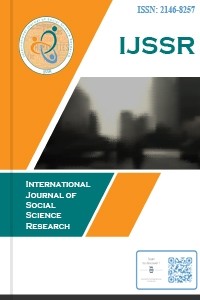HIGH INFLATION RISK AND GROWTH RATE
HIGH INFLATION RISK AND GROWTH RATE
___
- Visconti, R. M. (2012). Inflation risk management in project finance investments. International Journal of Finance and Accounting, 1(6), 198-207.
- García, J. A. and Werner, T. (2010). Inflation risks and inflation risk premia, European Central Bank, Working Paper, No. 1162.
- Reiser, D. (). Impact of alternative fixed-income strategies in response to emerging changes in Economic conditions, trends: Protection against Inflation Risk, https://www.creditsuisse.com/pwp/am/downloads/marketing/trends_012014_en.pdf
- Dictionary B. (2018). http://www.businessdictionary.com/definition/risk.html
- Oner, C. (2010). What is inflation?, Finance & Development, March, pp. 44-45.
- Labonte, M. (2011). Inflation: causes, costs, and current status, congressional research service,https://pdfs.semanticscholar.org/48ac/7bf4dd4a6c9bce7c05722506274307bba096.pdf
- Poedjıyo, A. S. (2014). Döviz kuru, enflasyon ve faiz oranları arasındaki ilişkiler: G8, D8 ve E-7 Ülkeleri karşılaştırması. Kocaeli Üniversitesi, Sosyal Bilimler Enstitüsü, İktisadi Geliştirme ve Uluslararası İktisat Yüksek Lisans Programı.
- Yüksel, A. (2014). Finansal risk ve yönetimi, Borsa İstanbul Risk Yönetimi Konferansı, 4 Haziran 2014.
- Rahmi, Y. and Tanrıöver, B. (2009). Faiz oranı, getiri farkı ve ekonomik büyüme: Türkiye örneği (1990-2006). Dokuz Eylül Üniversitesi İktisadi ve İdari Bilimler Fakültesi Dergisi, 24(1), 43-58.
- Sever, E. and Mızrak, Z. (No Date). Döviz kuru, enflasyon ve faiz oranı arasındaki ilişkiler, SÜ İİBF Sosyal ve Ekonomik Araştırmalar Dergisi, 265-282 http://dergipark.gov.tr/download/article-file/289511
- Sağlam, Y. and Erataş Sönmez, F. (2017). Finansal gelişme ve ekonomik büyüme arasındaki ilişki: Avrupa geçiş ekonomileri örneği, Eskişehir Osmangazi Üniversitesi İİBF Dergisi, 12(1), 121-140.
- Göcen, S. Türkiye’ nin 1990-2015 Dönemindeki ekonomik performansı üzerine bir değerlendirme, Marmara İktisat Dergisi, 1(1), 61-76.
- Wilson, R. A. & Briscoe, G. (2004). The impact of human capital on economic growth: a review, Third report on vocational training research in Europe: background report. Luxembourg: Office for Official Publications of the European Communities.
- Haller, A. P. (2012). Concepts of economic growth and development. challenges of crisis and of knowledge, Economy Transdisciplinarity Cognition, 15(1): 66-71.
- Fikirte Tsegaye Mamo, (2012). Economic growth and ınflation a panel data analysis, Södertörns University, Department of Social Sciences, Economics Master Programme, Thesis.
- Anyanwu Uchenna N. and Kalu Alexanda, O.U. (2015). The ımpact of statutory money supply management and commercial bank loans and advances (CBLA) on Economic growth: an empirical evidance in Nigeria. Arabian Journal of Business and Management Review, 3(5): 1-18.
- OECD - (2013). Growth: Building jobs and prosperity in developing countries, https://www.oecd.org/derec/unitedkingdom/40700982.pdf
- Yayın Aralığı: Yılda 2 Sayı
- Başlangıç: 2012
- Yayıncı: Şahin ORUÇ
HIGH INFLATION RISK AND GROWTH RATE
Rusçada Fiillerin Türkçedeki Öğrenilen Geçmiş Zamanda Eşdeğerlik Sorunu
Niraj JAIN, Roy CHILESHE, Francis MUWOWO, Specious MULENGA
Emine Akkaş baysal, Gürbüz OCAK
TÜRKİYE’DEKİ GİRİŞİM SERMAYESİ YATIRIM ORTAKLIKLARININ PERFORMANSLARININ KARŞILAŞTIRILMASI
